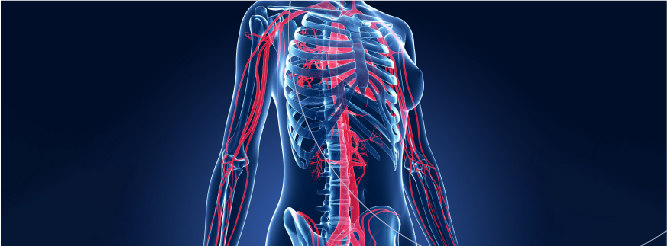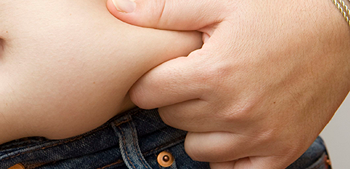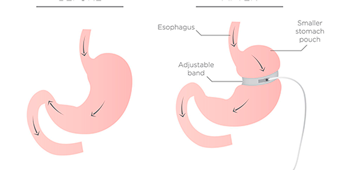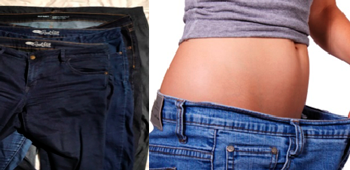
The gastric sleeve procedure, also known as a gastrectomy, is a restrictive bariatric surgery that significantly reduces the size of your stomach and your appetite to encourage weight loss. It is an uncomplicated procedure with a shorter recovery time than others. According to the latest global registry of the International Federation for the Surgery for Obesity and Metabolic Disorders (IFSO), gastric sleeve surgery is by far the most requested and practiced bariatric surgery worldwide.
A gastric sleeve physically restricts the amount of food you can eat by reducing the size of your stomach. It is a restrictive surgery that also limits the production of ghrelin, which contributes to a reduction in appetite. This allows patients to feel satisfied with less food and helps them with portion control if it was recommended to them by a licensed dietitian.
Out of all the bariatric surgeries that are practiced around the world, roughly 59% account for a gastric sleeve, and almost all of them are done with laparoscopic techniques. This is the bariatric procedure for which experts have the most data and the most register of outcomes and results in long-term follow-ups. It is also the most standardized procedure in the bariatric community. It’s been largely documented that complications due to gastric sleeve surgery are very low and that it provides good control and great benefits over comorbidities associated with obesity.
However, as with many surgeries, the recovery process might be particular for each patient. The healing and the post-operative diet play an essential role in the whole process of the patient to have a healthy recovery. Dr. Liza María Pompa González and the nutrition specialists on her team provide expert guidance and postoperative diet plans at our bariatric center to help patients heal and achieve successful and lasting results after gastric sleeve surgery.
How Long Does It Take Gastric Sleeve Incisions to Heal?
The healing time for gastric sleeve incisions can vary from person to person and depends on several factors, including your overall health, the surgical technique used, and how well you follow your surgeon’s post-operative instructions.
First, in the initial recovery, you will spend a day or two in the hospital for monitoring and recovery. During this time, the medical team will ensure that the patient is stable and that there are no immediate complications.
During the first week after the surgery, the incisions will naturally start to heal and you might experience some discomfort, swelling, and bruising around the incision sites. The stitches, staples, or adhesive tape used to close the incisions will remain in place during this time[1].
Once the two weeks pass, you will feel the discomfort and swelling reduce. The incisions might begin to scab over, and they should be healing well. In this phase, it’s important to continue following the surgeon’s guidelines for proper care and physical activity during this period.
After three to four weeks after the surgery, the incisions should be mostly healed on the surface. The stitches or staples might need to be removed during this time, depending on the technique used. The surgeon will advise you on when it’s safe to resume normal activities and exercise[2].
At six weeks and up to three months, the incisions should be fully closed and healed. The scars might still be slightly raised and red, but they will continue to fade over the coming months. The patient can generally resume more strenuous activities and exercises as directed by the surgeon[3]. The long-term healing will start over the course of several months, the scars will continue to mature and fade. It’s important to protect the healing incisions from excessive sun exposure, as this can lead to increased pigmentation in the scars.
How Do You Know If Your Gastric Sleeve Incision Is Infected?
The gastric sleeve surgery recovery implies ensuring the incisions are healing properly. The patient will also be aware of any sign of infection because an infected incision can lead to complications if not addressed promptly.
The signs[4] that might lead to infection include and which the patient should be aware are:
- Increased pain: While some level of pain and discomfort is normal during the healing process, an infected incision site might exhibit increasing or severe pain that is not improving with time or pain medication.
- Redness and swelling: If the area around the incision becomes increasingly red, swollen, and warm to the touch, it could be a sign of infection. Some degree of swelling and redness is common in the early stages of healing, but if it worsens or persists, it may indicate an issue.
- Pus or discharge: If you notice any discharge from the incision site that is cloudy, yellow, or greenish in color, it might indicate an infection. Healthy incisions typically do not have significant discharge.
- Bad odor: An unpleasant or foul odor emanating from the incision area can be a sign of infection. If you notice an unusual smell, it’s best to have it evaluated by your medical team.
- Fever: A fever, especially if other signs of infection accompany it, can be an indicator that your body is fighting off an infection. Elevated body temperature could be a sign of a systemic response to an infection at the incision site.
Although there are several ways to reduce the risk of infection in the incisions, according to the Cleveland Clinic, you should always wash your hands before and after touching your incisions, follow your healthcare provider’s instructions, avoid removing the tape strips, picking at staples, tissue glue or stitches, and keep your incisions dry.
How Long Does it Take Incisions to Heal After Bariatric Surgery?
As we mentioned before, the gastric sleeve procedure is performed through a series of small incisions in the abdomen. These incisions are typically made using minimally invasive techniques, such as laparoscopy, which involves using small instruments and a camera to guide the surgeon. The incisions are usually around 1 to 2 centimeters in length.
The healing process after these incisions is generally straightforward, but it still requires proper care and attention to avoid complications. The better way to have a healthy recovery is to take off the incision, keeping the incision sites clean and dry is essential to prevent infection. You’ll likely be advised to avoid soaking in water (such as baths and swimming) until the incisions are fully healed. Follow your surgeon’s recommendations for cleaning and dressing the incisions.
Also, you should follow your surgeon’s prescription for the painkillers, pain and discomfort around the incision sites are common after surgery. It’s important to take these medications as directed and report any unusual or severe pain to your medical team.
While it’s important to rest and recover, gradual movement and walking are encouraged to prevent blood clots and promote healing. Physical activity is highly recommended on long-term recovery, however, strenuous activities and heavy lifting should be avoided as recommended by your doctor[5].
Following a specific diet plan, on the other hand, is crucial after the gastric sleeve procedure. Your surgeon and dietitian will guide you on transitioning from a liquid diet to soft foods and eventually solid foods as your stomach heals and adjusts to its new size.
Remember to follow-up with your appointments with your medical team because these are essential to monitor your progress, address any concerns, and ensure that your incisions are healing properly. Some degree of discomfort, redness, and swelling can be normal in the early stages of healing. However, if you’re ever unsure about the status of your incisions, it’s better to err on the side of caution and seek medical advice. Your medical team is here to support you throughout your recovery process.
It’s important to note that every individual’s healing process can vary. If you notice any of these signs or are concerned about the healing process of your incisions, contact your surgeon or healthcare provider as soon as you can.
Keep in mind that you should follow your surgeon’s post-operative instructions closely and communicate any concerns or issues with your medical team. If you’re considering undergoing the gastric sleeve procedure, consult a qualified healthcare professional to discuss the risks, benefits, and expectations associated with the surgery.
Contact Us to Learn More
If you’re interested in knowing more about the recovery process after having the gastric sleeve, schedule an appointment with one of our doctors. We can help determine the right treatment for you. Contact us online anytime or give us a call at (619) 373-0229.
References
[1, 4] “Incision Care”. https://my.clevelandclinic.org/health/treatments/15709-incision-care. (Accessed July 25, 2023).
[2] “Gastric bypass surgery – discharge”. https://www.mountsinai.org/health-library/discharge-instructions/gastric-bypass-surgery-discharge. (Accessed July 25, 2023).
[3, 5] Bellicha A, Ciangura C, Roda C, Torcivia A, Aron-Wisnewsky J, Poitou C, Oppert JM. Effect of exercise training after bariatric surgery: A 5-year follow-up study of a randomized controlled trial. PLoS One. 2022 Jul 15;17(7):e0271561. doi: 10.1371/journal.pone.0271561. PMID: 35839214; PMCID: PMC9286216.


